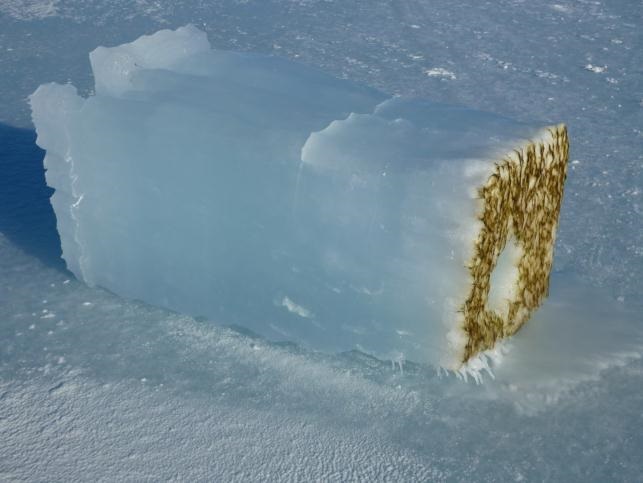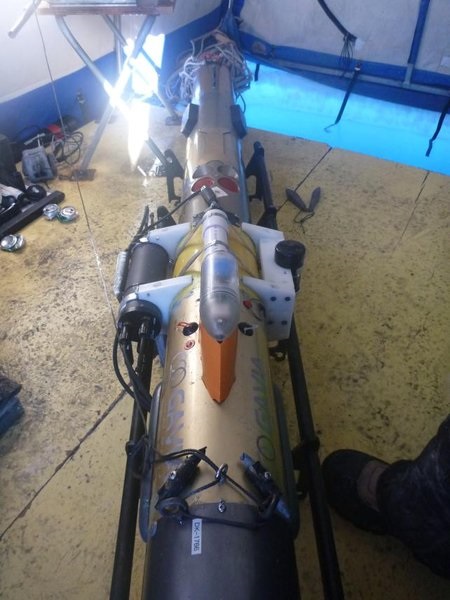Underwater Drones Map Algae Beneath Antarctic Ice

Although the surface of Antarctica is almost completely white, a field of green and brown algae clings to the underside of the sea ice around the frozen continent.
Previously, this underwater forest of algae was accessible only to marine creatures or specially trained divers. But now, researchers are using pioneering drones to scout out and map the miles of algae mats.
The Antarctic algae begin growing in early spring and rely on the small amount of sunlight that penetrates the ice to survive. They play a key role in the Antarctic food chain by supplying food for krill and other tiny animals. [50 Amazing Facts About Antarctica]
"The ice algae account for 15 to 20 percent of the primary production in the Antarctic sea ice area," Brian Sorrell, one of the researchers working on the project for Aarhus University in Denmark, said in a statement. "They're particularly important because they utilize the weak light in spring, when there are no other primary producers to provide food and energy for the rest of the food chain."

The diving drones are 8.2 feet (2.5 meters) long and are shaped like torpedoes. The devices are deployed from holes that the researchers cut into the thick ice using an oil burner and a steam drill. The carefully carved holes also happen to be an ideal entry point for hunting seals, and sometimes, the researchers have to share their space with seals and sea lions that crowd around the heaters set up to keep the holes from icing over.
Algae growing on the bottom of sea ice absorb light at different wavelengths. Each torpedo-shaped drone is equipped with a radiometer that measures how much light each clump of algae absorbs. Based on the measurements, scientists can predict the total amount of algae growing under the ice.
With this study, the team hopes to learn more about what factors influence the growth of Antarctic algae. Some evidence suggests that the rough texture of the bottom of the ice sheets is essential for the algae to grow. Rocky crystals of ice stick out to almost 4 inches (10 centimeters) from the bottom of the ice sheets, and small clumps of algae wedge themselves between these protruding crystals.
Sign up for the Live Science daily newsletter now
Get the world’s most fascinating discoveries delivered straight to your inbox.
Learning more about sea ice algae may reveal more about the complexities of the Antarctic food chain, the team says. The researchers plan to use the same drones to study sea ice algae in the Arctic next year.
Follow Kelly Dickerson on Twitter. Follow us @livescience, Facebook & Google+. Original article on Live Science.











